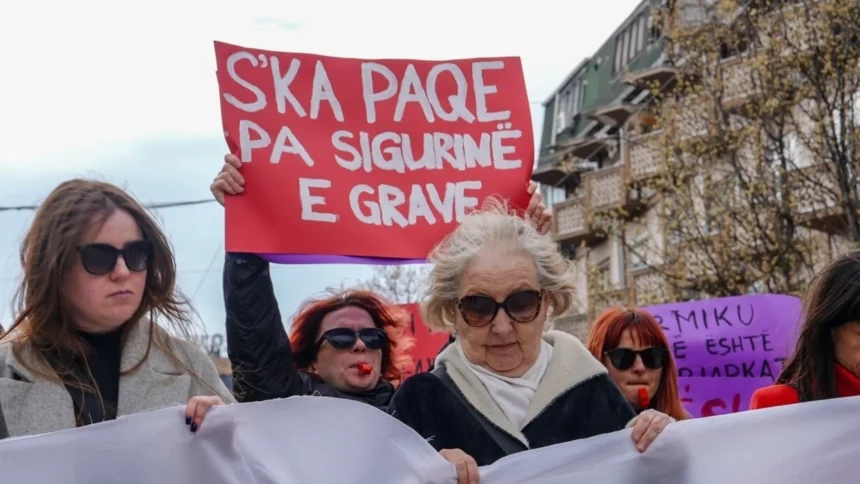Two hours past midnight, Arlinda and several colleagues finish their shift at a call center in Pristina serving clients in the United States.
In her team, there are both men and women, and to avoid risks, Kosovo Police officers advised Arlinda and her female colleagues to leave the office in groups or accompanied by male colleagues.
“One night, a man followed a female colleague from our office to the taxi area,” Arlinda told Radio Free Europe.
Arlinda prefers to remain anonymous to protect her family from worrying about her safety.
Parents across Kosovo are aware that their daughters may not be safe after dark.
“I have many friends in rural areas. But when it gets dark, they either get picked up by someone for the bus or don’t go out at all,” said Besarta Breznica, a feminist activist.
This reality contrasts with a recent Gallup report, widely shared on social media, which ranks Kosovo as the third safest country in Europe based on citizens’ perceptions.
The Gallup survey measured safety through four questions:
- Do you feel safe walking alone at night in your area?
- Do you trust the local police?
- Have you or a family member experienced theft in the past year?
- Have you been attacked or robbed in the past year?
According to Gallup, 89% of Kosovars feel safe, slightly below Norway, on par with Denmark, and higher than anywhere else in Europe. Kosovo is 12th globally in perceived safety.
However, interviews with seven women who recently moved from Kosovo to Western and Northern Europe—including Germany, Switzerland, Austria, and Belgium—revealed that they feel safer abroad than in Kosovo.
The discrepancy arises because the Gallup report shows only the national average, not gender-specific perceptions. Kosovo Police data indicates that sexual harassment and assault cases reached record levels last year, with 102 harassment and 74 sexual assault cases reported.
So far in 2025, 55 harassment cases, 54 rapes, and 38 sexual assaults have been reported. Although the Kosovo Police does not release data by victim gender, most victims are women, according to past records.
Breznica highlights systemic challenges:
“Victims face multiple bureaucratic procedures, having to make five statements across institutions. Low punishments, such as fines, also discourage reporting. There are additional issues like poor public lighting in villages and some Pristina neighborhoods, and the black market for weapons, which increases risk.”
Between 2010 and March 2025, 59 women were killed in Kosovo, mostly by spouses. Human rights organizations have criticized authorities for failing to protect women at risk, despite ongoing promises to strengthen legal mechanisms and surveillance to prevent violence.
Key takeaway: While statistics suggest Kosovo is one of Europe’s safest countries, many women continue to face significant threats and do not feel safe at night, pointing to a persistent gap between perception and reality.







